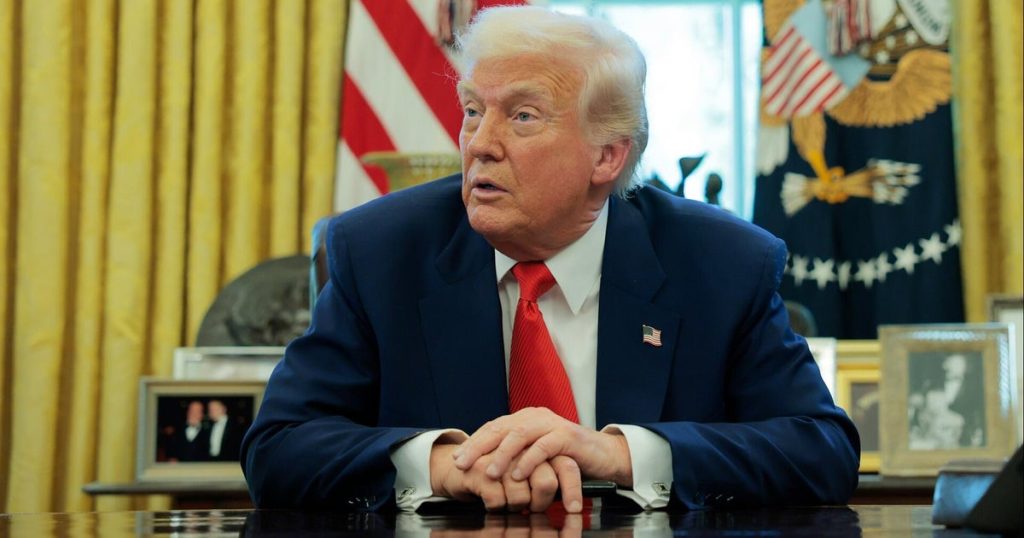On Friday, the President enacted a series of executive orders aimed at rejuvenating the nuclear power sector in the United States. Describing nuclear energy as a “hot industry,” he emphasized the importance of fostering an environment conducive to energy dominance. The newly signed executive orders are intended to expedite the testing, application, and development of nuclear technology, signaling a strategic shift towards a more aggressive stance in energy policy.
| Article Subheadings |
|---|
| 1) Overview of Executive Orders |
| 2) Strategic Importance of Nuclear Energy |
| 3) Current State of U.S. Nuclear Capability |
| 4) Organizational Changes Ahead |
| 5) Safety Concerns Addressed |
Overview of Executive Orders
The new executive orders signed by the President are designed to advance the nuclear energy sector significantly. By facilitating faster testing and permitting processes within the Department of Energy, these actions aim to streamline the development of nuclear reactors. According to officials, this initiative will not only focus on nuclear reactor testing but also include provisions for building reactors on federally owned land and enhancing uranium mining and enrichment operations.
Strategic Importance of Nuclear Energy
Nuclear energy is being positioned as vital for the United States in various strategic realms. Interior Secretary Doug Burgum indicated that the U.S. has “choked” its nuclear industry through overregulation, urging the need for reform as a means to strengthen energy security. Additionally, Defense Secretary Pete Hegseth emphasized that energy security directly correlates to national security, asserting that reliable energy sources are essential for military operations.
Current State of U.S. Nuclear Capability
As of August 2023, the national landscape comprises 93 operational commercial nuclear reactors across 54 plants situated in 28 states. The average age of these reactors is about 42 years, which raises concerns regarding the longevity and sustainability of the current energy supply. Michael Kratsios, director of the White House Office of Science and Technology Policy, noted that the U.S. has not built new reactors in the past three decades, an alarming trend for a nation previously recognized as a leader in nuclear innovation.
Organizational Changes Ahead
The executive orders also hint at a “substantial reorganization” of the National Reactor Commission. However, specifics on what these changes will entail have yet to be revealed. A senior official stated that the reorganization would likely result in workforce changes, although the total number of positions affected is currently undetermined. This reorganization is part of the broader effort to position the nuclear sector for revival.
Safety Concerns Addressed
When questioned about whether expediting the permitting process would compromise safety standards, the President assured stakeholders, “We’re going to get it very fast and we’re going to get it very safe.” This reflects a commitment to both innovation and safety, critical factors in the sensitive area of nuclear energy development.
| No. | Key Points |
|---|---|
| 1 | The President signed executive orders to boost nuclear power development. |
| 2 | Energy security is being framed as a critical national security issue. |
| 3 | Existing nuclear reactors are aging, necessitating new construction. |
| 4 | Organizational changes to the National Reactor Commission are forthcoming. |
| 5 | Safety concerns related to hastened processes have been addressed by the President. |
Summary
The recent executive orders represent a pivotal moment for nuclear energy policy in the United States. By focusing on both development and safety, the administration is setting the stage for a nuclear renaissance aimed at increasing energy independence while strengthening national security. The changes in the operational framework of relevant organizations will be closely monitored as the nation seeks to regain its leadership position in nuclear energy.
Frequently Asked Questions
Question: What does the new executive order entail for nuclear energy?
The executive orders focus on expediting testing, permitting, and building nuclear reactors, while also referring to the enhancement of uranium mining and enrichment.
Question: Why is nuclear energy considered essential for national security?
Nuclear energy is viewed as critical for energy security, which directly affects the nation’s military readiness and operational capabilities.
Question: How many commercial nuclear reactors are currently operating in the U.S.?
As of August 2023, there are 93 operational commercial nuclear reactors across the United States.
